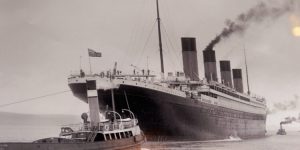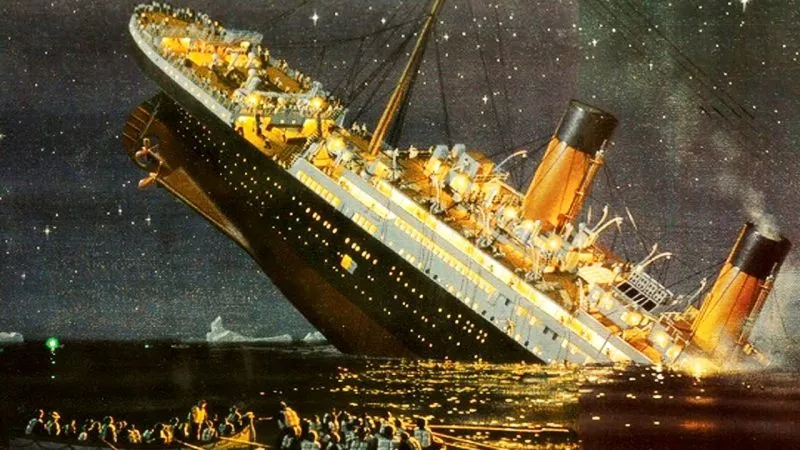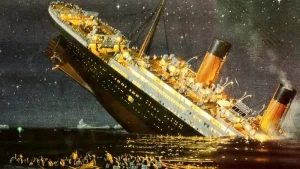The sinking of the RMS Titanic on April 15, 1912, remains one of the most harrowing maritime disasters in history. It was a moment that shook the world, not just because of the scale of the tragedy, but because of the symbolism that the Titanic embodied—a ship that was deemed unsinkable, yet met a catastrophic end. This article explores the historical events surrounding the Titanic, the impact of its loss, and the lessons humanity learned from this unforgettable disaster.

The Titanic: A Marvel of Modern Engineering
At the time of its launch, the RMS Titanic was the largest and most luxurious ocean liner ever built. Constructed by the White Star Line and designed to be the pinnacle of elegance and engineering, the Titanic measured 882 feet in length and could accommodate over 2,200 passengers and crew. It was outfitted with lavish interiors, featuring grand staircases, ornate dining rooms, and private suites that catered to the wealthiest individuals of the day. The ship’s size and advanced safety features, such as watertight compartments, led many to believe that it was practically unsinkable.
The Fateful Voyage
On April 10, 1912, the Titanic embarked on its maiden voyage from Southampton, England, to New York City, carrying a mixture of wealthy elites, middle-class travelers, and immigrants seeking new opportunities in America. Among its passengers were prominent figures such as John Jacob Astor IV, one of the wealthiest men in the world, and Isidor Straus, the co-owner of Macy’s.
Despite warnings of icebergs in the North Atlantic, the ship sailed at full speed on the night of April 14. At approximately 11:40 PM, disaster struck. The Titanic collided with an iceberg, causing a gash in its hull that led to the flooding of its watertight compartments. Although the damage seemed minimal at first, the ship’s design flaws became apparent, and it soon became clear that the Titanic was doomed.
The Sinking and Loss of Life
In the early hours of April 15, chaos ensued as passengers and crew rushed to the lifeboats. Tragically, the Titanic did not carry enough lifeboats for all on board, as safety regulations at the time were outdated and based on a ship’s tonnage rather than its passenger capacity. Of the 2,224 people on board, only 705 survived, leaving over 1,500 to perish in the freezing waters of the Atlantic.
The sinking was a dramatic and heart-wrenching event. Many lifeboats were launched half-full, while countless people were left stranded on the ship or in the icy waters. Survivors recounted harrowing scenes of loved ones saying their final goodbyes, the ship breaking in half, and the eerie calm that followed after the Titanic disappeared beneath the waves.
The Aftermath and Impact
News of the Titanic disaster spread rapidly, shocking the world. The sheer loss of life and the involvement of high-profile individuals made headlines worldwide. Public outrage soon followed, leading to international investigations and calls for maritime reforms. The Titanic’s sinking revealed not only the overconfidence in technology but also the deep class divide, as many of the victims were third-class passengers who had limited access to lifeboats.
The tragedy prompted major changes in maritime safety laws. The International Convention for the Safety of Life at Sea (SOLAS) was established in 1914, mandating adequate lifeboats for all passengers, lifeboat drills, and the use of radios for continuous communication at sea. The Titanic disaster also brought about advances in iceberg detection and prompted shipping routes to be adjusted to avoid dangerous areas.
Legacy of the Titanic
More than a century later, the Titanic disaster remains a powerful symbol of human hubris, technological optimism, and the fragile nature of life. The wreckage of the Titanic was discovered in 1985, lying 12,500 feet below the surface of the Atlantic Ocean. The site has since become a subject of fascination, inspiring books, documentaries, and the famous 1997 film Titanic, which introduced the story to a new generation.
The Titanic’s story endures as a reminder of the limits of human ingenuity in the face of nature’s unpredictability. Its legacy continues to shape our understanding of safety, social inequality, and the perils of overconfidence in technology.
The Titanic disaster remains one of the most tragic and consequential events in maritime history. It revealed the dangers of placing too much faith in human engineering and the devastating consequences of ignoring basic safety protocols. But from this tragedy emerged important lessons that have made modern sea travel safer and more equitable. The Titanic’s legacy lives on, not only in the lessons learned from its sinking but also in the countless lives saved by the reforms it inspired.



you’re actually a good webmaster. The web site loading velocity is amazing.
It seems that you are doing any unique trick. Furthermore,
The contents are masterpiece. you have performed a excellent job on this
topic!